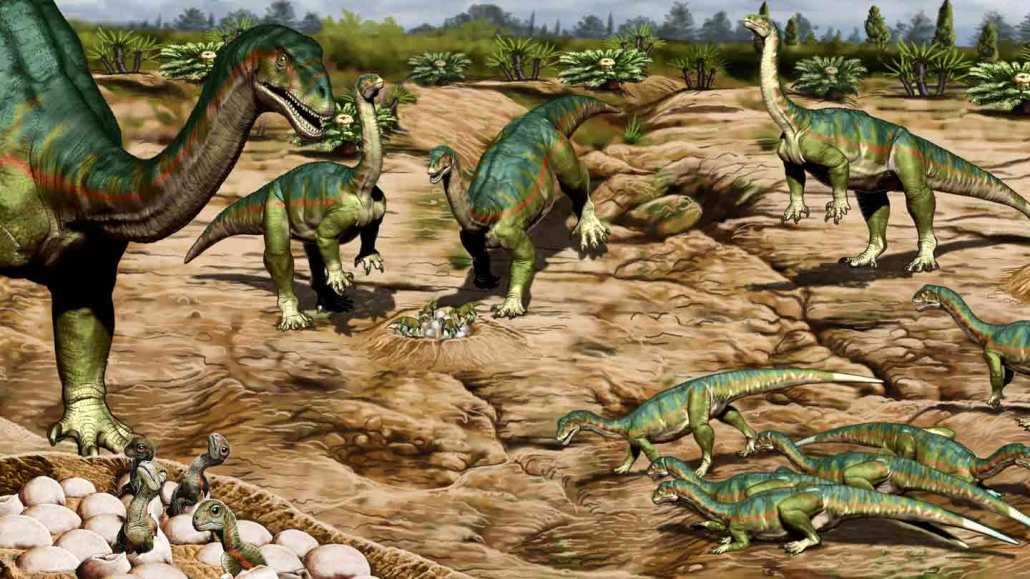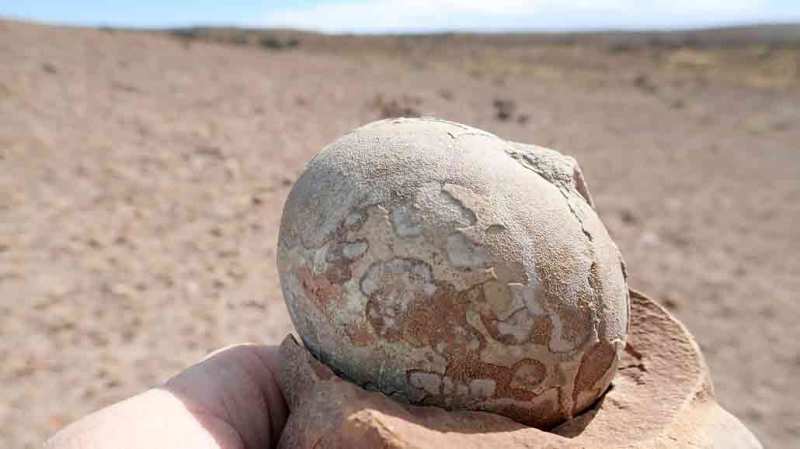Some dinosaurs may have lived in herds as early as 193 million years ago
Fossils of long-necked Mussaurus suggest that the creatures stayed together through their lives

A herd of Mussaurus patagonicus, including hatchlings in nests, a group of juveniles and fully grown adults, are gathered together in this artist’s representation.
Jorge Gonzalez








